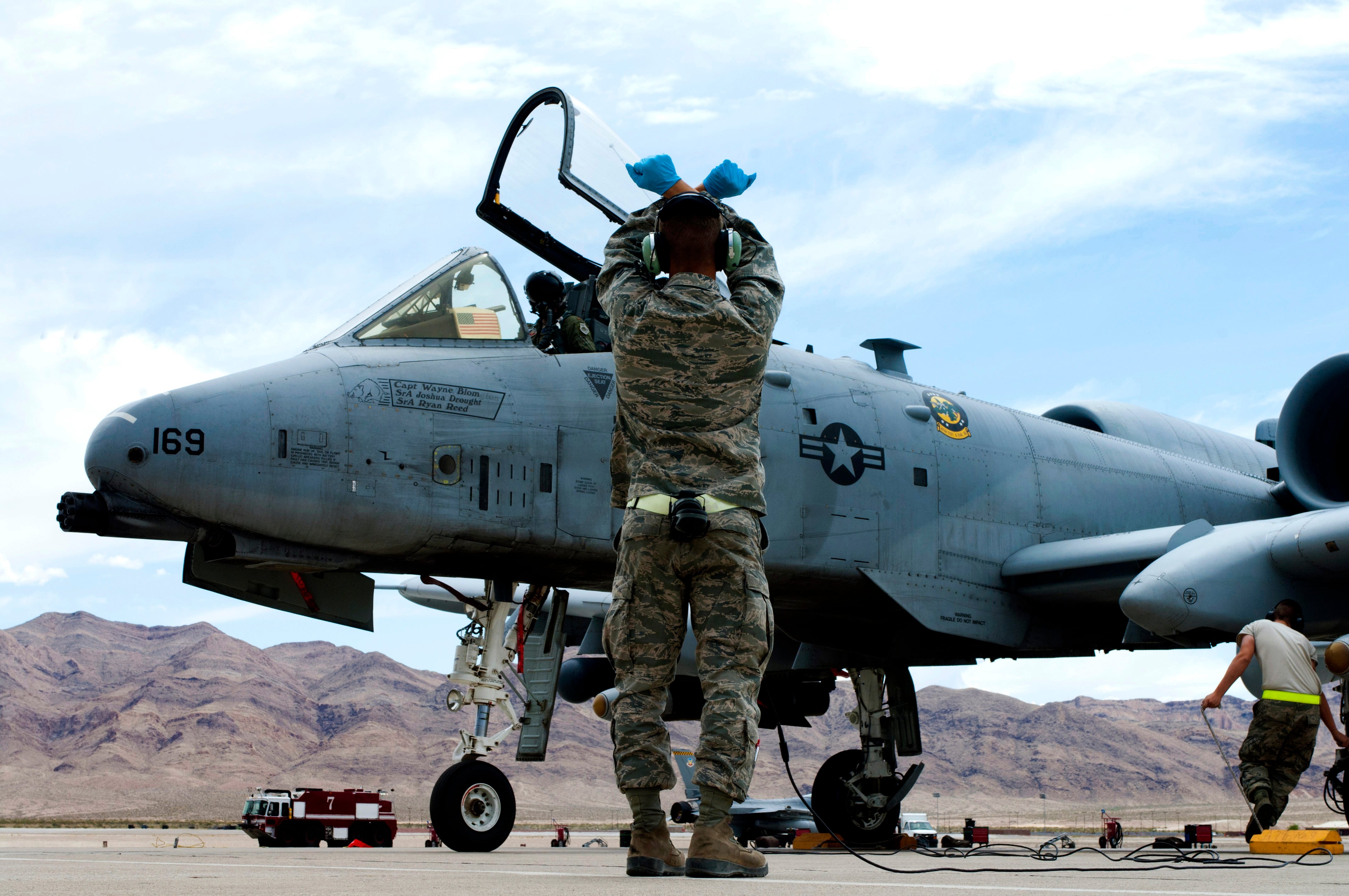WASHINGTON — A U.S. Air Force official managing the A-10 Thunderbolt aircraft says the service is “hollowing” its Warthog fleet by starving it of resources amid a push to retire the aging attack plane — but still continuing to heavily fly it.
In a March 31 briefing, Pamela Lee, the A-10 systems manager at Hill Air Force Base in Utah, said the Air Force has “resourced the A-10 to divest yet flew it like an enduring fleet, rapidly accelerating [the] decline toward today’s hollowing fleet.”
The watchdog group Project on Government Oversight posted the slides Tuesday. The Air Force confirmed the slides are authentic, but said they were prepared for internal discussion and that Lee declined to comment.
The A-10, designed during the Cold War to be a tank-killing aircraft, was flown heavily in the Middle East and Afghanistan over the last 20 years to provide close-air support. But the Air Force has long warned the A-10 would not survive a high-end fight in contested airspace and has since 2015 repeatedly attempted to retire the fleet, either in full or in part, to free up funding.
“The A-10 is a great platform for a [permissive] environment,” Air Force Chief of Staff Gen. CQ Brown told the House Armed Services Committee in a Wednesday hearing. “I don’t see very many [permissive] environments that we’re going to roll into in the future.”
Although Congress rejected all the service’s efforts, Lee said the Air Force’s decisions have “devastated” the fleet and left it “dealing with perpetual challenges.”
The “A-10 lives in the shadow of [fiscal 2015] divestiture decisions,” Lee said in the briefing’s summary.
Lee’s briefing slides said the service deferred the A-10′s “hogback” fuselage structural repair work from 2013 to 2019, which she said left 120 jets at risk of being grounded. The number of A-10s heading to depots for major maintenance was also cut by more than half, she added.
Lee said the A-10′s aging engine nacelles are quickly becoming a significant problem, representing a bigger threat to the aircraft’s readiness than its wings.
And she said the A-10′s re-winging efforts are falling short, with new wings purchased for only 173 of the service’s 281 Warthogs. Lee said this means 145 A-10s wouldn’t be able to fly a six-month deployment.
According to the slides, the Air Force has until the second quarter of FY23 to buy more wings before it risks a “stalled recovery.” Fixing the wing, depot issue and other shortcomings would take at least a decade, she said.
If Congress doesn’t grant the service’s request to start retiring the A-10, Lee said, it will have to quickly act to mitigate the worst of the problems that have come from these decisions.
In the committee hearing, Brown said the service plans to buy replacement wing kits for about 218 A-10s. The service called for retiring 21 A-10s as part of its FY23 budget request, leaving the service with 260 Warthogs; Brown said those will not be re-winged.
Rep. Lisa McClain, R-Mich., expressed confusion about the Air Force’s apparent intention to not buy enough wing kits for all remaining A-10s and asked if only 218 planes needed new wings.
“Depends on how many A-10s we keep,” Brown said. “What we don’t want to do is buy more wing kits than we’re going to need if we’re going to start retiring A-10s.”
Air Force Secretary Frank Kendall added that even if those remaining 42 A-10s wouldn’t get replacement wings, they would still be able to fly.
Kendall also said the Air Force, if free to do so, would retire the A-10 fleet by the end of the next five-year plan.
Stephen Losey is the air warfare reporter for Defense News. He previously covered leadership and personnel issues at Air Force Times, and the Pentagon, special operations and air warfare at Military.com. He has traveled to the Middle East to cover U.S. Air Force operations.





